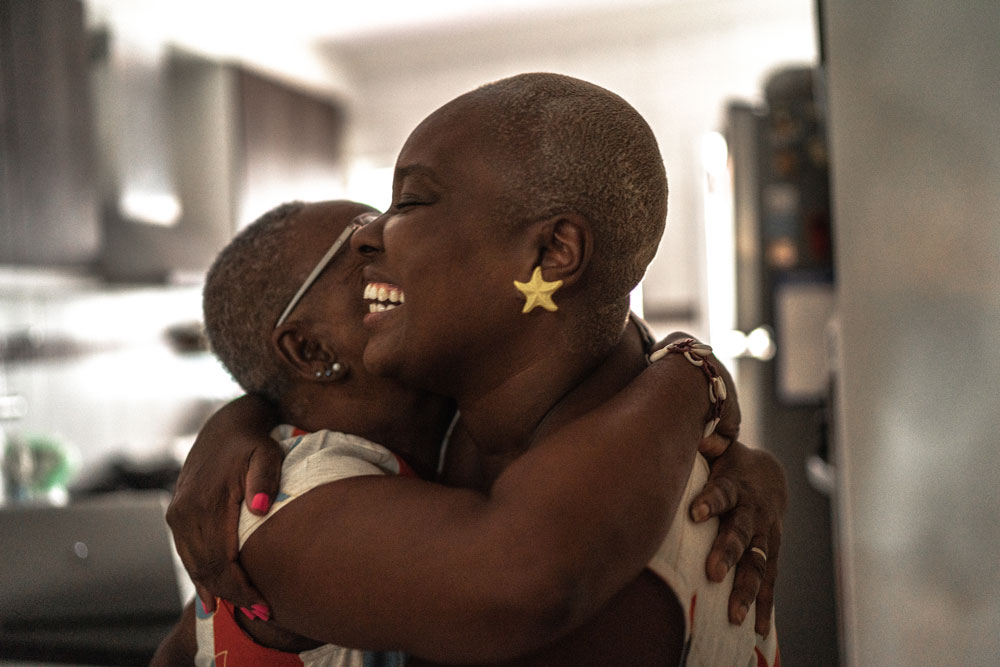Accelerating Delivery and Patient Access to Rare Disease Treatments – Highlights from World Orphan Drug Congress
There are up to 10,000 distinct rare diseases in the world, impacting more than 30 million people in the US alone, with approved treatments for approximately 5% of these diseases.1 The sheer number and combined prevalence impose a heavy toll on families and society, both in terms of treatment cost and disease burden. A thriving biopharmaceutical pipeline fueled by gene therapies and AI-enabled advances; bolstered by regulatory and payer initiatives -- are collectively driving the next quantum leap for the rare disease community, but there’s still significant work ahead to accelerate development and access for patients in desperate need of novel medicine. These core themes and related topics took center stage in thoughtful discussions at the recent World Orphan Drug Congress, which took place from April 24-25 in Boston, MA. Key takeaways and exciting progress updates across the extended rare disease research community included:
Regulatory and legislative actions. FDA leadership was well-represented in discussions focused on the role of regulation and legislation in expediting the delivery of innovative medicines to patients. Robert Califf, FDA Commissioner, opened his fireside chat discussion with Annie Kennedy of the EveryLife Foundation for Rare Disease by referencing the amount of work taking place inside the FDA to prioritize rare disease patients. Peter Marks, Director, CBER, FDA reinforced the regulatory commitment to apply accelerated approval mechanisms, acknowledging the wait for endpoints of statistical significance is too long for the rare communities. Dr. Marks also spoke to regulatory initiatives, such as the START program, designed to further accelerate development by shortening the wait times for regulatory meetings, and enabling more frequent communication between sponsors and FDA to address clinical development issues. In framing industry priorities, Jason Tardio of Ovid Therapeutics emphasized the urgency to protect incentives around the Orphan Drug Act, as well the rare pediatric disease designation and priority review voucher programs. Tardio then urged audience members who were not familiar with these programs to “take the time to understand it, and advocate for it.” Pamela Gavin of NORD echoed this sentiment when stating “patients, families and patient advocacy groups need to understand the role they play, and the impact of their voice.”
Advanced therapies. Rare disease development is synonymous with cell and gene innovation. As viral vectors have become the most widely used delivery mechanisms for clinical applications of gene therapy, there’s an emerging openness from regulators to consider these as platform technologies and apply similar methodology to combination products or medical devices. As viral vector delivery matures and becomes well-characterized, regulators will shift their focus to assess the differences between treatment modality rather than continually reassessing entire platforms, thus reducing the CMC burden on manufacturers. Dr. Marks compared this approach to a razor – “if the handle remains the same, we only need to look at the new blades,” envisioning a more efficient future model that evaluates the new bespoke treatment, instead of the delivery platform, where safety has already been characterized. Encouraging sustainable manufacturing in platform approaches is an important focus for the FDA. In addition, Dr. Marks commented for the first time on the FDA’s thoughts around platform or basket clinical trials in rare gene therapy – while we may be some way off from this approach proving to be a reality, the willingness to discuss this future option highlighted the agency’s commitment to pragmatism and innovation.
After decades of development, broad application of gene therapy is accelerating, especially in disease areas with high unmet need, where standard of care is either insufficient or non-existent.
The level of heterogeneity and complexity of rare diseases still pose daunting challenges for screening, diagnosis and treatment. Sequencing of the human genome was a watershed moment for rare disease advances, but we can’t rely on DNA sequencing results alone in disease identification, cautioned Renata Gallagher, MD, PhD, medical geneticist and Medical Director at Parexel. During An honest discussion: The challenges of genotype interpretation and phenotype variation, Dr. Gallagher illustrated the challenges disease identification by DNA sequencing by comparing the DNA changes causative of sickle cell disease and of metachromatic leukodystrophy. Sickle cell anemia is caused by a single genetic change while metachromatic leukodystrophy is caused by hundreds of changes, and different combinations of changes may cause different forms of this neurodegenerative disease. The early-onset form must be treated with gene therapy pre-symptomatically, and novel DNA changes pose a challenge for the clinician and for clinical trials. The clinician perspective and the monitoring of symptoms over time are critical to diagnosis, timely treatment and patient identification for clinical trials. This is an ongoing research problem where the issue of best practices will likely remain for years to come.
Market access. Access to innovative medicine is a perennial theme at WODC. This year, common discussion themes focused on the need to come up with creative value and risk-based approaches and importance of engaging payers early. Mark Trusheim of Tufts Medical Center advised, “gene therapy has the potential to be life-changing, so manufacturers need to be 10 steps ahead.” Clinical trials have traditionally been designed for regulators, but payers need to be consulted well in advance of pivotal trial to influence the selection of primary and secondary endpoints. During these early engagement sessions, speakers encouraged developers to educate payers on rare diseases and be mindful to align endpoints and potential RWD to that which can be measured in 12-24 months in novel payer arrangements. Alignment between sponsors, regulators and payers will result in broader patient access.
Dr. Marks elaborated on efforts between FDA and the Centers for Medicare and Medicaid Services colleagues in the approval and payment model for sickle cell disease as a success story for collaboration, while urging payers to recognize clinical benefit beyond “hard and fast” clinical endpoints. Mark Trusheim spoke to the need to measure post-approval patient benefit, and the importance of early discussions with payers, not only for clinical trial design, but also to explore how to measure outcomes in a meaningful way.
AI. AI is revolutionizing drug discovery, development, and commercialization. There was no shortage of discussion on this topic, as a host of presentations, panels and round tables addressed a range of emerging applications and their associated opportunities and challenges. Dr. Califf spoke to the transformational power of large language models to produce high quality documentation in electronic health records, further enriching EHRs as real-world data sources to further our understanding of the patient journey. Kim McDonnell, Associate Director of Rare Disease at Parexel, hosted a round table discussion on the appropriate use of AI-generated patient narratives, using examples developed from an ALS patient interview, and another generated by Parexel GPT. Panelists were united in the benefits of AI-generated narratives, when used transparently and ethically. Ethical use discussion focused on the ability for the medical community to tap into patient insights as actionable data to improve preventative, proactive treatment. Volv demonstrated their rare disease patient finding ability through EHR systems, using their AI methodology, and early success with matching Fabry and Pompe disease patients to treatment and clinical trials in the UK.
Other event highlights included updates from advocacy groups, patient networks as well as the stories of rare families and their lived experiences.
For the second year in a row, I had the privilege of moderating a panel of industry luminaries, which included Dr. Marks; Mark Trusheim of Tufts Medical Center; Kinnari Patel of Rocket Pharma and Jamie Sullivan of the Everylife Foundation for Rare Disease. I am always proud to represent Parexel, a mission-focused organization whose unwavering commitment to patient-guided drug development, combined with global scale, is driving transformational change in our industry.
References
Related Insights
Report
New Medicines, Novel Insights: Advancing rare disease drug development
May 22, 2023
Playbook
Are you using real-world evidence?
Feb 1, 2023
Report
New Medicines, Novel Insights: Accelerating development of cell and gene therapies
May 22, 2023
Whitepaper
The Chinese Pharmaceutical Market: Size, R&D, Regulations, Market Access and Innovations
Mar 9, 2023
Podcast
Rare endpoints: Delivering on unmet patient needs
May 7, 2024
Webinar
China's Market Approval Policy and Medical Insurance Payment System for Rare Disease
Jul 21, 2022
Whitepaper
Overview of China's Market Approval Policy Med Insurance Payment System
Apr 7, 2022
Blog
Celebrating 40 Years of Rare Disease Progress: WODC Highlights
Jun 6, 2023
Blog
Unpacking NICE’s review of the HST routing criteria: implications for manufacturers
Oct 3, 2024
Article
Near-term strategies for biotech drug developers facing shifting healthcare dynamics
Feb 14, 2024
Article
EU Orphan Drug Designation – overcoming regulatory challenges
Jul 20, 2022
Podcast
Why Rare Disease Therapeutics Need Early Market Access Planning
Jan 4, 2023
Related Insights
Report
New Medicines, Novel Insights: Advancing rare disease drug development
May 22, 2023
Playbook
Are you using real-world evidence?
Feb 1, 2023
Report
New Medicines, Novel Insights: Accelerating development of cell and gene therapies
May 22, 2023
Whitepaper
The Chinese Pharmaceutical Market: Size, R&D, Regulations, Market Access and Innovations
Mar 9, 2023
Podcast
Rare endpoints: Delivering on unmet patient needs
May 7, 2024
Webinar
China's Market Approval Policy and Medical Insurance Payment System for Rare Disease
Jul 21, 2022
Whitepaper
Overview of China's Market Approval Policy Med Insurance Payment System
Apr 7, 2022
Blog
Celebrating 40 Years of Rare Disease Progress: WODC Highlights
Jun 6, 2023
Blog
Unpacking NICE’s review of the HST routing criteria: implications for manufacturers
Oct 3, 2024
Article
Near-term strategies for biotech drug developers facing shifting healthcare dynamics
Feb 14, 2024
Article
EU Orphan Drug Designation – overcoming regulatory challenges
Jul 20, 2022
Podcast
Why Rare Disease Therapeutics Need Early Market Access Planning
Jan 4, 2023







